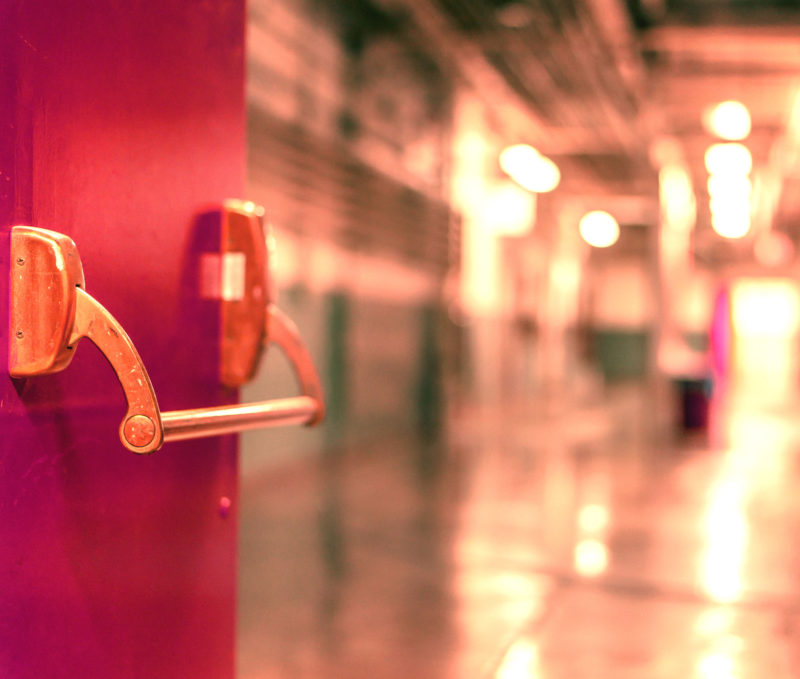
Fear of back-to-school has an official term: backtoschoolaphobia. Well, that’s not exactly true, but anxiety before the first day of school is so prevalent that it should have an official term. (Get on it, medical community!) Indeed, it’s not uncommon for children, parents and teachers to all dread the roar of those big yellow buses, the chaos of a building filled with new faces, and the many hours ahead in those hard seats. In fact, one teacher I know has a recurring nightmare where twenty-five third graders show up a full week early to a musty classroom still filled with half-unpacked boxes, and the teacher is wearing workout gear and is completely unprepared for the six hours and many days ahead.
Indeed, the first thing to know is that you’re not alone. Do a quick google search of “school phobia,” “school avoidance,” “school refusal,” or just simply, “tips for back to school” and you’ll find a community of people who would rather face the inside of an iron maiden than the inside of a classroom. So I’ve put together a few easy tips on how to win at back-to-school and start the academic year off on the right foot (or perhaps more realistically, how to survive until the weekend because, as the saying goes, the only way out is through):

Back To School with Nathalie Le Du
For Parents:
- Routine? What’s that? Bite the bullet and set all the alarms to “school time” for the week or two before the big day. Then perform a few dress rehearsals of what mornings will be like. In fact, many schools will allow you to tour the school early in order to reacquaint your child with the hallways, meet the teacher, and find his or her classroom. While you’re at it, start reinforcing those bedtimes too.
- Break out the calendar—and the crayons, highlighters, stickers, and other fun art supplies. Reacquaint your kids to the family calendar and talk about the weeks ahead. Then enjoy decorating and discussing the upcoming plans together. If your child is old enough, perhaps shop for a planner, scheduling app, or wall calendar together, like The Kid’s Awesome Activity Wall Calendar and the Paint by Sticker Wall Calendar.
- Arrange a playdate with a few of your child’s former classmates from school who may be back from summer camp or vacation so they can get reacquainted and rebuild their friendship. Having some existing social ties will ease the nerves and give your child someone to say hello to on that first day. Also, spend some time with their parents—your own friendships can be a great source of parenting advice, help, and information.
- Stop avoiding that enormous back-to-school shopping list, and just give in to it. Throw some back-to-school treats for yourself into the cart as well, like cute stationary, a new (and unstained) laptop bag, an indulgent book like The Tiny Book of Tiny Pleasures, and of course, a bottle of wine.
- For more tips, click here and here.
For Students:
- Make a list of goals for the year, and then follow them up with a list of actions you can do now. Want to get that spot on the soccer team? The time to warm up those legs and practice those drills is now. How about making some new friends? Begin researching ways to get involved with afterschool clubs or sports. Or maybe you just want to avoid being nagged about studying. Start setting aside an hour a day to read, so that when the time comes to study, you already have a habit in place. Whatever your goal is, set it down in writing and then find a few simple actions to set yourself up for success.
- Learn how you learn. Think of recent time when you tackled a tough topic or learned a new skill—what helped you the most? Was it listening to someone explain it to you? Did you draw a diagram to visualize the process? Or did you physically try an experiment? There are three main types of learning styles—auditory (hearing), visual (seeing), and kinesthetic (doing/acting). Most people learn best by mixing all three in different proportions—perhaps you learn best by first reading about a topic, and then seeing a short video clip about it, and then you cement the idea in your head by doodling about it. You can also ask friends and people you admire how they learn new things and study to get some new methods. Finding your own style of learning will make studying less painful, more fun, and result in better grades.
- For more tips, click here.
For Teachers and Educators:
- Visualize your classroom. Before you begin to amass your supplies and face the chaos of a dusty classroom, take a moment to imagine your ideal classroom. Imagine your perfectly arranged room, with all the materials your students will need neatly arranged. And then picture the same room a week later after 25 pairs of sticky hands and feet have run all over everything. Now, set up your classroom to make clean-up as easy as possible, and then, as the song goes, let it go! (In fact, you may want to play that song as you set up your room just to reinforce the point.)
- Think about who your students are. Next, think about your bookshelf—do those books reflect their lives, dreams, culture, interests, and language? Books should be both a mirror and a window to new worlds. Our favorites include: Spy On History: Mary Bowser and the Civil War Spy Ring, Wildly Spectacular Sports Science, and Fearsome Creatures of the Underwood. Think there may be a child or two (or more) who needs an extra boost or a reminder of what they learned last year? Have a Summer Brain Quest workbook on hand, so he or she can catch up.
- Picture how you will welcome your students. Remember, the most powerful tool you have on the first day of school is not on a checklist or from a school supply store, but rather, it’s your ability to create a positive and welcoming learning environment for each student. Let your students know that you’re excited to see them and start the new school year, and your spirit will be sure to catch on.
- For more tips, click here.




No Comments